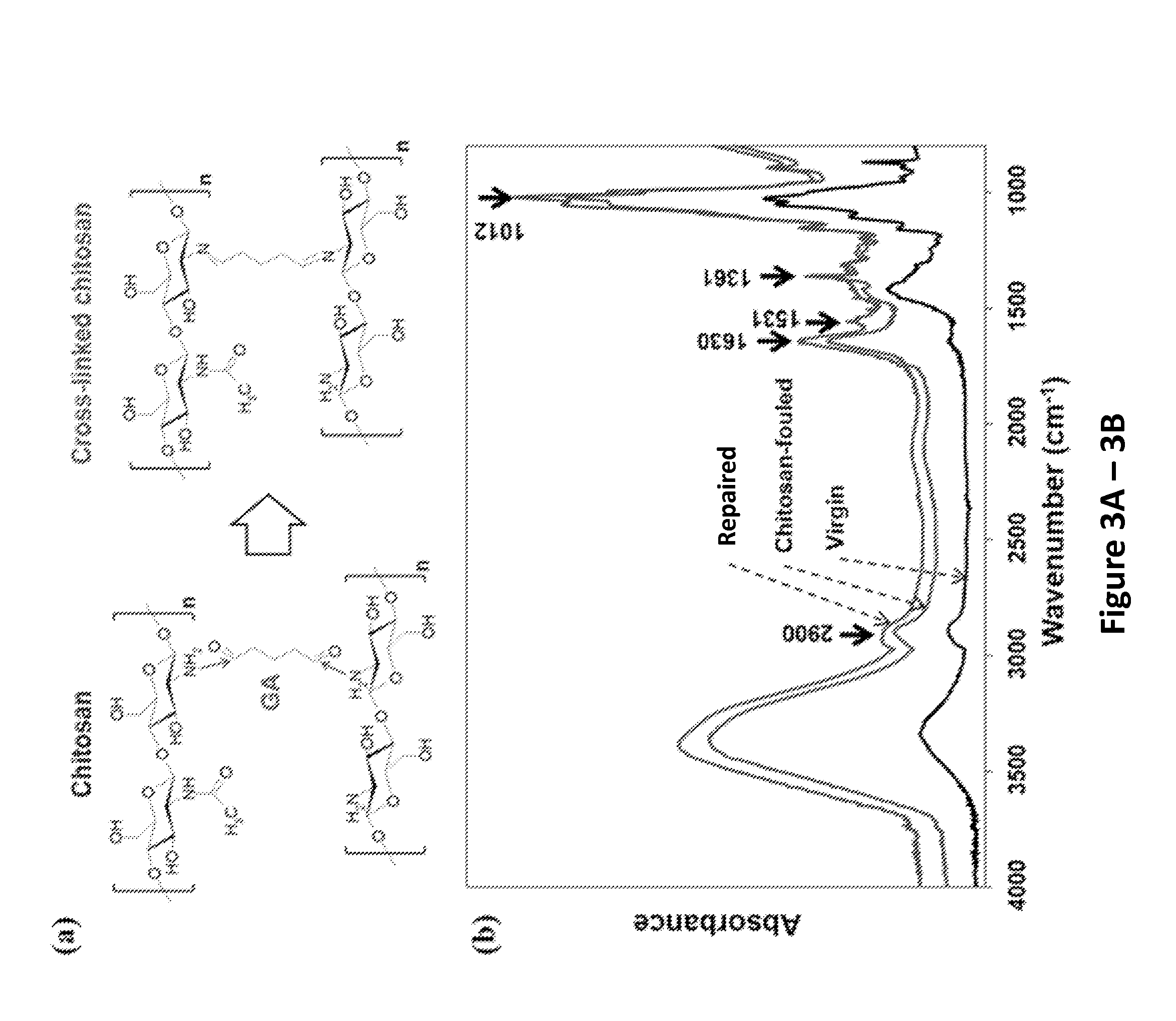In Situ Repairing Technique for Compromised Polymeric Membranes
a polymer membrane and in situ repair technology, applied in the direction of heparin adhesives, adhesive types, coatings, etc., can solve the problems of product water quality deterioration, system failure, lack of technology that can properly address
- Summary
- Abstract
- Description
- Claims
- Application Information
AI Technical Summary
Benefits of technology
Problems solved by technology
Method used
Image
Examples
experimental examples
[0051]The invention is further described in detail by reference to the following experimental examples. These examples are provided for purposes of illustration only, and are not intended to be limiting unless otherwise specified. Thus, the invention should in no way be construed as being limited to the following examples, but rather, should be construed to encompass any and all variations which become evident as a result of the teaching provided herein.
[0052]Without further description, it is believed that one of ordinary skill in the art can, using the preceding description and the following illustrative examples, make and utilize the compounds of the present invention and practice the claimed methods. The following working examples therefore, specifically point out the preferred embodiments of the present invention, and are not to be construed as limiting in any way the remainder of the disclosure.
example 1
In Situ Repairing of Compromised Polymeric Membranes
[0053]Damage to membranes during operation and the consequential loss of process integrity are prevalent problems in membrane-based separation processes, particularly in water and wastewater treatment where ensuring product water quality is essential. Presented herein is an innovative method of repairing compromised polymeric membranes without requiring the knowledge of damage location or the disassembly of a system. This in situ repairing method involves preferential blocking of a damaged site using chitosan agglomerates and subsequent cross-linking with glutaraldehyde to form a sturdy plug. This study demonstrates that a sample ultrafiltration membrane with severe physical damage could recover its nearly original performance in terms of water permeability (96%) and solute / particle rejection (87-100%) by the repairing process.
[0054]The materials and methods employed in these experiments are now described.
[0055]Physical damage was ...
PUM
| Property | Measurement | Unit |
|---|---|---|
| Time | aaaaa | aaaaa |
| Pressure | aaaaa | aaaaa |
| Diameter | aaaaa | aaaaa |
Abstract
Description
Claims
Application Information
 Login to View More
Login to View More - R&D
- Intellectual Property
- Life Sciences
- Materials
- Tech Scout
- Unparalleled Data Quality
- Higher Quality Content
- 60% Fewer Hallucinations
Browse by: Latest US Patents, China's latest patents, Technical Efficacy Thesaurus, Application Domain, Technology Topic, Popular Technical Reports.
© 2025 PatSnap. All rights reserved.Legal|Privacy policy|Modern Slavery Act Transparency Statement|Sitemap|About US| Contact US: help@patsnap.com



